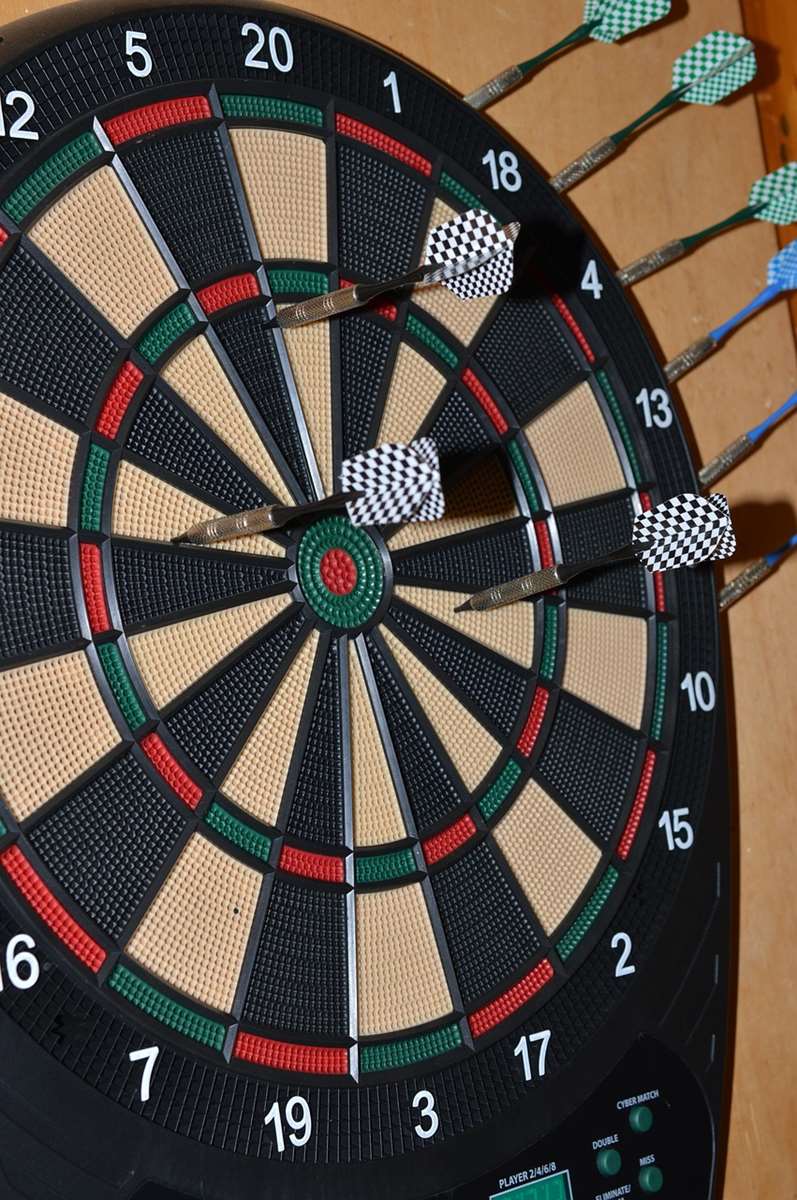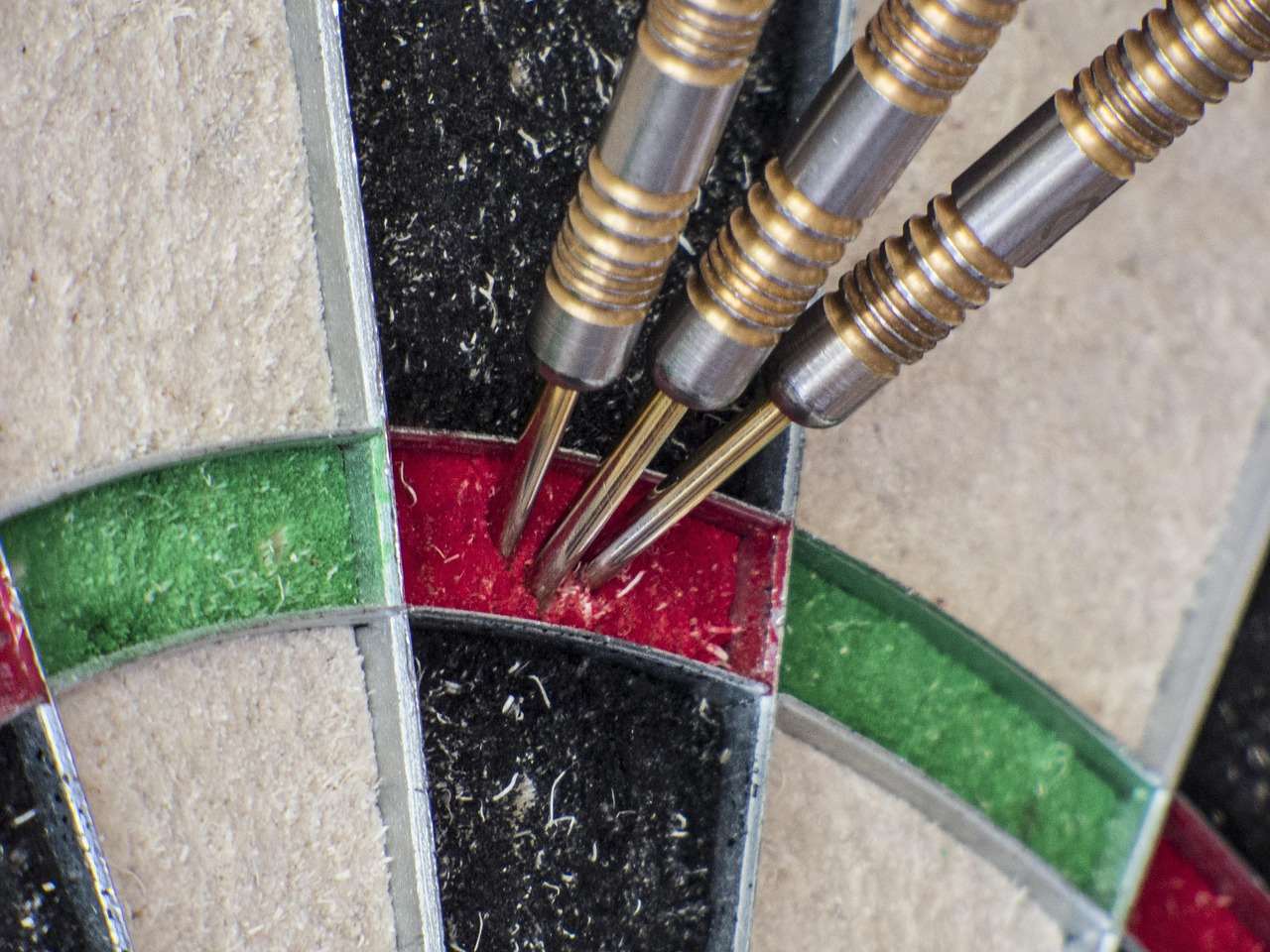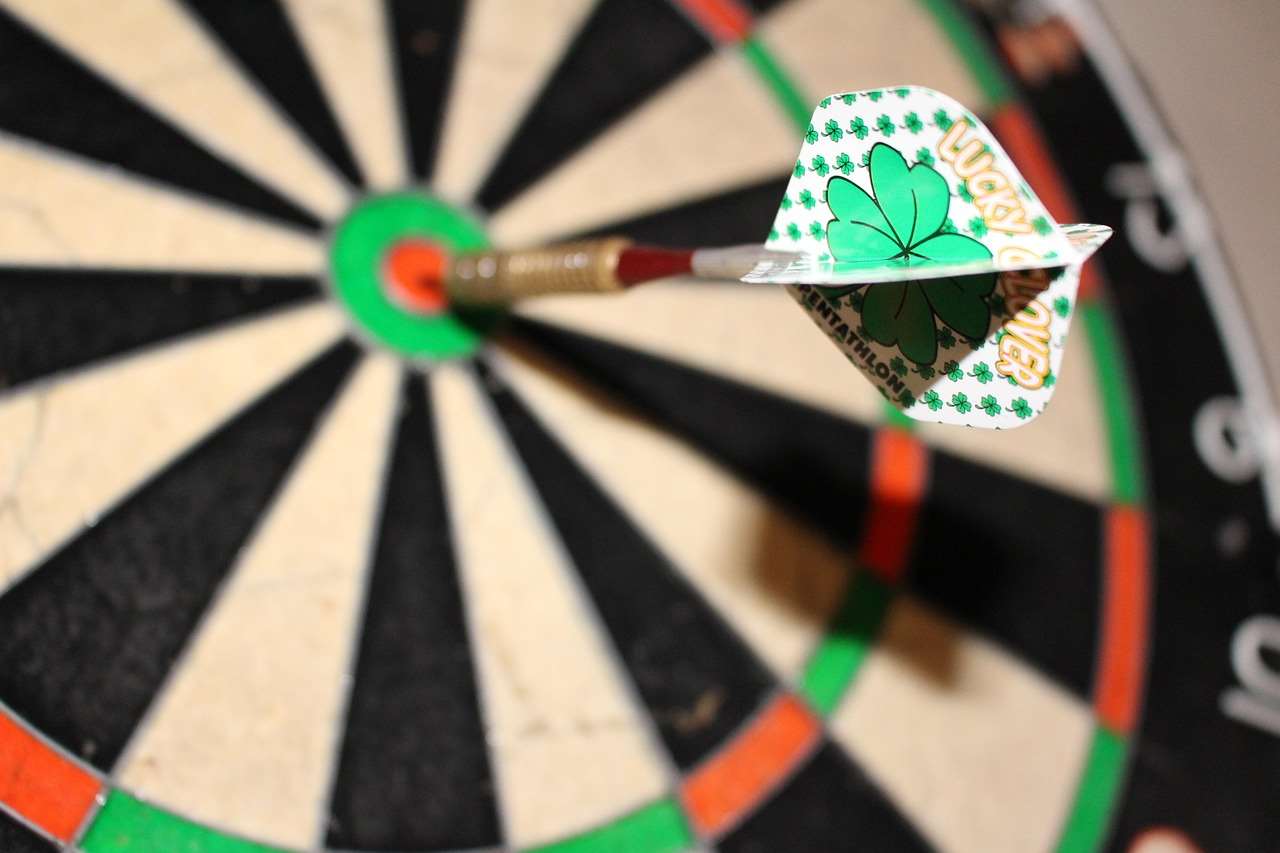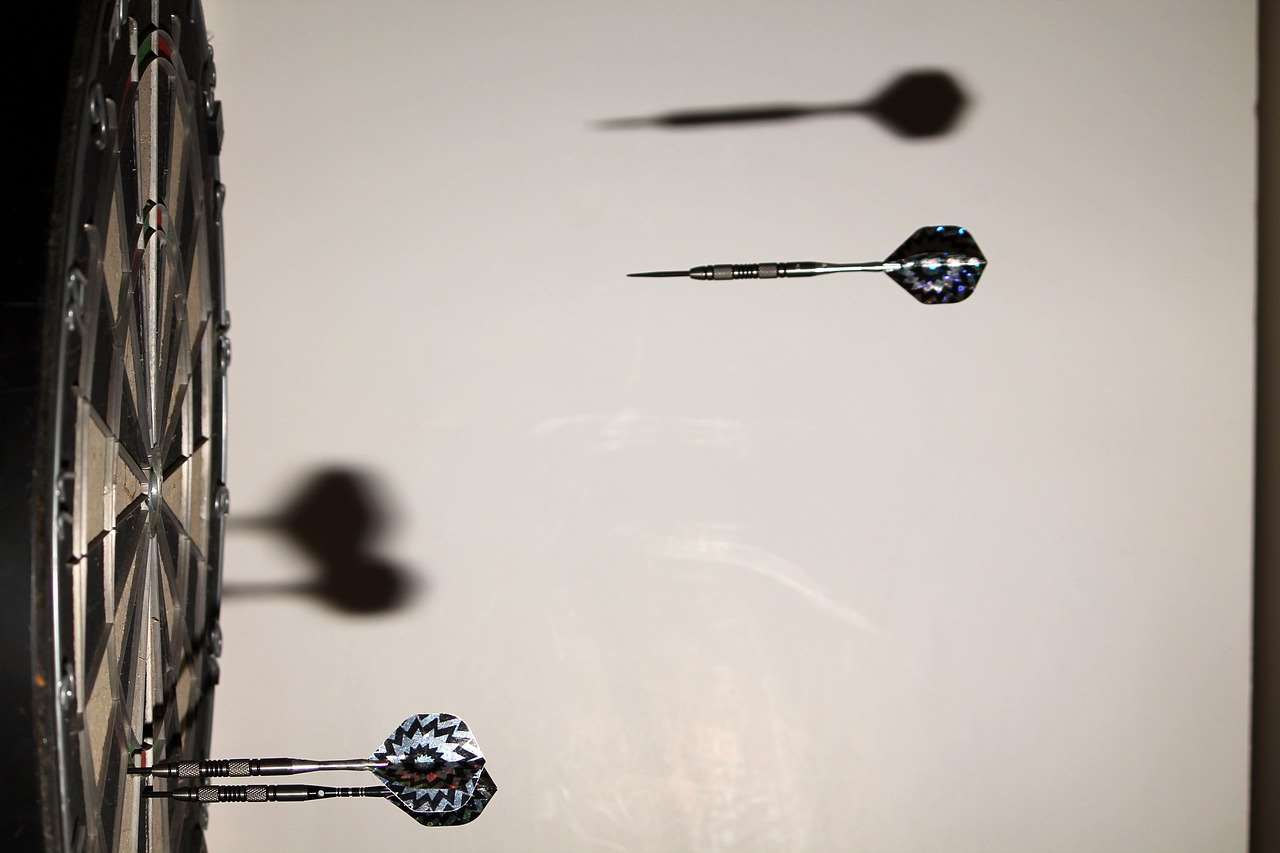Understanding the Fantasy Darts Player Equipment Impact is crucial for predicting performance and drafting a winning team. Player equipment choices, from darts to stems and flights, can noticeably affect consistency and scoring; this article explores those factors and offers actionable insights for fantasy darts enthusiasts, covering barrel materials, grip, weight distribution, and customization strategies.
⚠️ Still Using Pen & Paper (or a Chalkboard)?! ⚠️
Step into the future! The Dart Counter App handles all the scoring, suggests checkouts, and tracks your stats automatically. It's easier than you think!
Try the Smart Dart Counter App FREE!Ready for an upgrade? Click above!
Understanding the Fantasy Darts Player Equipment Impact
In the world of competitive darts, it’s easy to focus solely on a player’s skill and mental fortitude. However, the equipment they use plays a significant, often underestimated, role in their performance. For those involved in fantasy darts, understanding the Fantasy Darts Player Equipment Impact can provide a crucial edge when selecting your team. This section delves into the specifics of how different equipment choices can influence a player’s consistency, accuracy, and overall scoring potential.
While predicting a darts player’s success in a fantasy darts league often centers around recent form and historical averages, understanding the nuances of darts equipment choices can offer valuable insights. Does a player recently switch barrel materials? Have they altered their stem length or flight shape? Such changes can have a profound effect on their game, potentially impacting their scores and your fantasy league standings. Recognizing these shifts will significantly improve your ability to build a strong and winning fantasy team. Don’t be afraid to dive into Darts Betting And Fantasy Leagues Guide as you construct your team.

The Anatomy of a Dart: How Each Component Affects Performance
A dart is comprised of four key components: the barrel, the point, the stem, and the flight. Each part contributes to the dart’s overall balance, aerodynamics, and feel. A player’s choice of each component is a deeply personal decision, influenced by their throwing style and preferences. Let’s examine each part in detail:
The Barrel: Material, Grip, and Weight
The barrel is the main body of the dart and arguably the most crucial element. The material, grip, and weight of the barrel significantly influence how the dart feels in a player’s hand and how it flies through the air. Common materials include:
- Tungsten: Dense and durable, tungsten allows for slimmer barrels that group tightly on the board. Higher tungsten percentages (80-95%) generally indicate a higher quality dart.
- Brass: Less expensive than tungsten, brass barrels are typically thicker and bulkier. They are a good option for beginners but less desirable for serious players.
- Nickel Silver: A mid-range option, nickel silver offers a balance of durability and affordability.
The grip refers to the texture on the barrel. Different types of grips, such as knurled, ringed, or smooth, cater to various throwing styles. Some players prefer a strong grip for more control, while others prefer a smoother barrel for a cleaner release. The weight of the barrel, usually ranging from 18 to 30 grams, also plays a crucial role. Heavier darts tend to be more stable in the air, while lighter darts may be easier to throw with less effort.
The Point: Grip and Style
The point of the dart, while seemingly insignificant, can also impact performance. Points come in various lengths and styles, including smooth, grooved, and movable points. The point must be properly fitted to the barrel to ensure consistent performance. Movable points, also known as ‘spring points’ or ‘conversion points’, are often used when playing on electronic dartboards to help prevent bounce-outs.
The Stem: Length and Material
The stem connects the barrel to the flight and affects the dart’s trajectory. Stems come in different lengths, typically ranging from short to extra long. Shorter stems tend to make the dart fly straighter, while longer stems provide more stability. Materials include:
- Nylon/Plastic: Affordable and readily available, nylon stems are a popular choice. However, they can be prone to breaking.
- Aluminum: More durable than nylon, aluminum stems offer increased longevity.
- Carbon Fiber: Lightweight and strong, carbon fiber stems are a premium option for serious players.
Stem length affects the angle at which the dart enters the board. Players often experiment with different stem lengths to find the optimal angle for their throwing style. This is directly tied to darts sponsorship deals as discussed under Impact Betting Sponsorship Darts.

The Flight: Shape and Material
The flight is the fin-shaped component at the rear of the dart that provides stability and lift. Flights come in various shapes, sizes, and materials, each affecting the dart’s flight path differently. Common flight shapes include:
- Standard: The most common shape, providing good stability and lift.
- Slim: Offers less drag and a faster flight speed.
- Kite: Provides enhanced stability, particularly for players with a less consistent throw.
Flight materials include:
- Polyester: Durable and affordable, polyester flights are a popular choice.
- Nylon: More flexible than polyester, nylon flights can be more forgiving for less experienced players.
- Aluminum: Aluminum flights are more rigid than polyester and nylon, providing greater stability and reduced drag.
Choosing the right flight shape and material depends on the player’s throwing style and the desired flight characteristics. Some players experiment with different flight shapes and materials to fine-tune their dart’s trajectory.
The Importance of Personalization and Finding the Right Fit
Ultimately, the best darts equipment is the equipment that feels most comfortable and natural for the individual player. Personalization is key to maximizing performance. Many professional dart players spend countless hours experimenting with different barrel weights, stem lengths, and flight shapes to find the perfect combination that suits their unique throwing style.
Some common customization strategies include:
- Adjusting Barrel Weight: Experiment with different barrel weights to find the weight that provides the most consistent and comfortable throw.
- Changing Stem Length: Adjust stem length to fine-tune the dart’s angle of entry into the board.
- Trying Different Flight Shapes: Experiment with various flight shapes to optimize the dart’s stability and flight speed.
- Modifying Grip: Try different grip styles or add grip tape to the barrel to enhance control and comfort.
Finding the right equipment is an ongoing process that requires patience and experimentation. It’s essential to consider your throwing style, personal preferences, and the specific characteristics of each component when making your selections. Remember that what works well for one player may not work well for another. Therefore, consider Betting Sponsorship Impact On Darts as a way to familiarize yourself with players and their preferred equipment.

How to Spot Equipment Changes and Predict Performance
For fantasy darts players, monitoring equipment changes is crucial for gaining a competitive advantage. Professional dart players often make subtle adjustments to their equipment in response to changes in their game or playing conditions. Recognizing these changes and understanding their potential impact can provide valuable insights into a player’s likely performance.
- Follow Player Interviews and Social Media: Pay attention to interviews and social media posts where players may discuss equipment changes or adjustments.
- Watch Matches Closely: Observe players’ darts closely during matches to identify any changes in barrel, stem, or flight.
- Check Equipment Lists: Some tournaments publish equipment lists, providing a detailed overview of the darts being used by each player.
When you spot an equipment change, consider the following factors:
- The Nature of the Change: Was it a minor adjustment, such as a slight change in stem length, or a more significant change, such as switching to a completely different barrel?
- The Player’s Reason for the Change: Was the player struggling with their previous equipment? Are they trying to address a specific issue in their game?
- The Potential Impact of the Change: How might the change affect the dart’s flight path, stability, and overall feel?
By carefully analyzing equipment changes, you can make more informed decisions when selecting your fantasy darts team and increase your chances of success.
Advanced Strategies: Weight Distribution and Aerodynamics
Beyond the basic components of a dart, more advanced considerations like weight distribution and aerodynamics also play a significant role. These factors affect how the dart flies through the air and how it behaves upon impact with the board.
Weight Distribution: Front-Weighted vs. Rear-Weighted
The weight distribution of a dart refers to where the majority of its weight is concentrated. Darts can be front-weighted, rear-weighted, or evenly weighted. Front-weighted darts tend to be more stable and easier to control, while rear-weighted darts may offer more speed and accuracy. The ideal weight distribution depends on the player’s throwing style and release.
Aerodynamics: The Role of Flights and Barrel Shape
The aerodynamics of a dart are determined by the shape of the barrel and the size and shape of the flights. A streamlined barrel shape and smaller flights can reduce drag and increase speed, while a more bulbous barrel shape and larger flights can provide greater stability and lift. Players often experiment with different combinations of barrel shapes and flight sizes to optimize their dart’s aerodynamics for their throwing style and playing conditions. Remember, How Betting Companies Sponsor Darts can impact player choices on equipment.

The Psychological Element of Equipment Confidence
Beyond the purely technical aspects, the psychological impact of equipment choices cannot be overlooked. A player’s confidence in their equipment can significantly influence their performance. If a player feels comfortable and confident with their darts, they are more likely to throw with conviction and consistency.
Conversely, if a player lacks confidence in their equipment, they may become hesitant or indecisive, leading to errors and inconsistency. Equipment confidence is a crucial element of mental fortitude in professional darts. A player who believes in their setup is better equipped to handle pressure and perform at their best.
Conclusion: Leveraging Equipment Knowledge for Fantasy Darts Success
Understanding the Fantasy Darts Player Equipment Impact is a valuable tool for any serious fantasy darts enthusiast. By paying attention to equipment choices, customization strategies, and the psychological element of equipment confidence, you can gain a significant edge in your fantasy league. Monitor player interviews and social media, observe matches closely, and analyze equipment lists to identify changes and predict their potential impact. Remember that finding the right equipment is an ongoing process, so continue to learn and adapt your strategies as the game evolves. Always consider Bookmaker Sponsorship Professional Darts when considering player choices. Finally, ensure you’re well-versed in everything discussed under Sponsorship In Major Darts Tournaments as you make your final decision. Dive deeper into the world of fantasy darts and start building your winning team today!

Hi, I’m Dieter, and I created Dartcounter (Dartcounterapp.com). My motivation wasn’t being a darts expert – quite the opposite! When I first started playing, I loved the game but found keeping accurate scores and tracking stats difficult and distracting.
I figured I couldn’t be the only one struggling with this. So, I decided to build a solution: an easy-to-use application that everyone, no matter their experience level, could use to manage scoring effortlessly.
My goal for Dartcounter was simple: let the app handle the numbers – the scoring, the averages, the stats, even checkout suggestions – so players could focus purely on their throw and enjoying the game. It began as a way to solve my own beginner’s problem, and I’m thrilled it has grown into a helpful tool for the wider darts community.